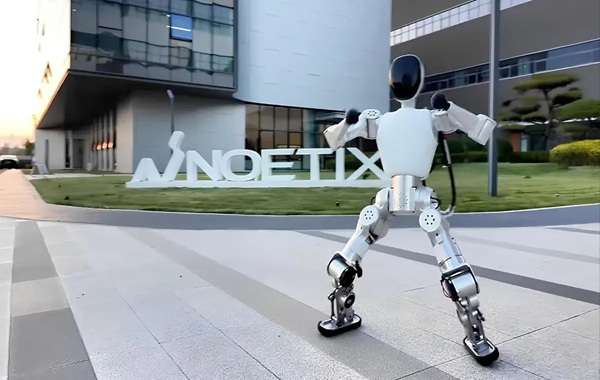How China built a humanoid robot that’s cheaper than your phone
Chinese startup Noetix Robotics is challenging assumptions about what a humanoid robot should cost. Fresh off a nearly RMB 300 million (US$41 million) pre-B funding round led by Vertex Ventures, the company has revealed how it engineered its consumer robot Bumi to sell for just RMB 9,998 (around US$1,380).
That price places it squarely in the consumer electronics segment, roughly the same as an iPhone 17 Pro Max in China. It puts Bumi alongside high-end smartphones, laptops, and even premium headphones, far from the price brackets typically associated with humanoids.
According to TechNode, Bumi has quickly become one of the most talked-about entrants in China’s robotics market.
The 94-centimeter-tall (3.1 feet) robot has already shown strong demand momentum. Noetix reported that more than 100 units were sold within the first hour of release, and the first 500 were snapped up within two days on JD.com.
Its pricing is notable because full-size humanoid robots in the United States and other markets typically cost 30 to over 100 times more, making them unattainable for the average consumer. Bumi, while not designed as a heavy industrial worker or a full household automation system, functions and moves like a humanoid and is intended as a friendly social companion and learning platform.
This shift represents a turning point for the category. Rather than showcasing expensive engineering upgrades that push robots further from mainstream adoption, Noetix is so far focused on scaling affordability and usability for real buyers.
Engineering for Cost First
Noetix attributes its record-low pricing to rethinking the fundamental cost drivers behind humanoid robotics. As reported by TechNode, founder Jiang Zheyuan said the team targeted three main aspects of design and production to reach its price point.
The first is vertical integration. Instead of procuring off-the-shelf control boards and motor drivers from external suppliers, a typical practice that adds markups and limits system optimization, the company’s designs these critical modules in-house. This allows tighter alignment between hardware and software performance while eliminating vendor premiums.
The second is structural redesign. The company chose composite materials with targeted metal reinforcement only where needed. This engineering decision cut total weight to just 12 kilograms (26.5 pounds), far less than many other humanoids. That lighter frame allowed smaller motors and more compact batteries, creating cascading cost reductions throughout the mechanical system.
Finally, the firm built its supply chain almost entirely inside China. Nearly 100 percent of components, including motors, sensors, and Rockchip processors, are sourced domestically.
This strategy leverages China’s manufacturing density to shorten logistics delays and accelerate iteration cycles, key advantages in a product category that still evolves rapidly.
Designed for classrooms and living rooms
Bumi is positioned primarily for education and entertainment. According to the report, its size was intentionally chosen to avoid the “uncanny valley” effect among young children, while fitting comfortably into real home and school environments.
Noetix plans to make the robot accessible first as a tool for engagement, enrichment, and experimentation before gradually expanding humanoids toward more general-purpose assistance.
The robot integrates with JD.com’s Joy Inside 2.0 ecosystem and supports open programming interfaces. This signals Noetix’s interest in cultivating a developer community around Bumi, treating it as a participatory platform rather than a closed gadget.
To keep pace with demand and increase volume-based cost efficiencies, the company aims to scale manufacturing to 1,000 units per month by late 2025. It currently operates production facilities in Beijing and Changzhou, with a third site under planning.
Humanoid robotics may now be entering a cost-reduction era. If the momentum continues, robots that once felt like far-off prototypes could become products that regular consumers actually bring home, and Bumi may be one of the first visible signs of that shift.
Source: Interesting Engineering
Breakthrough optical processor lets AI compute at the speed of light
How China built a humanoid robot that’s cheaper than your phone

